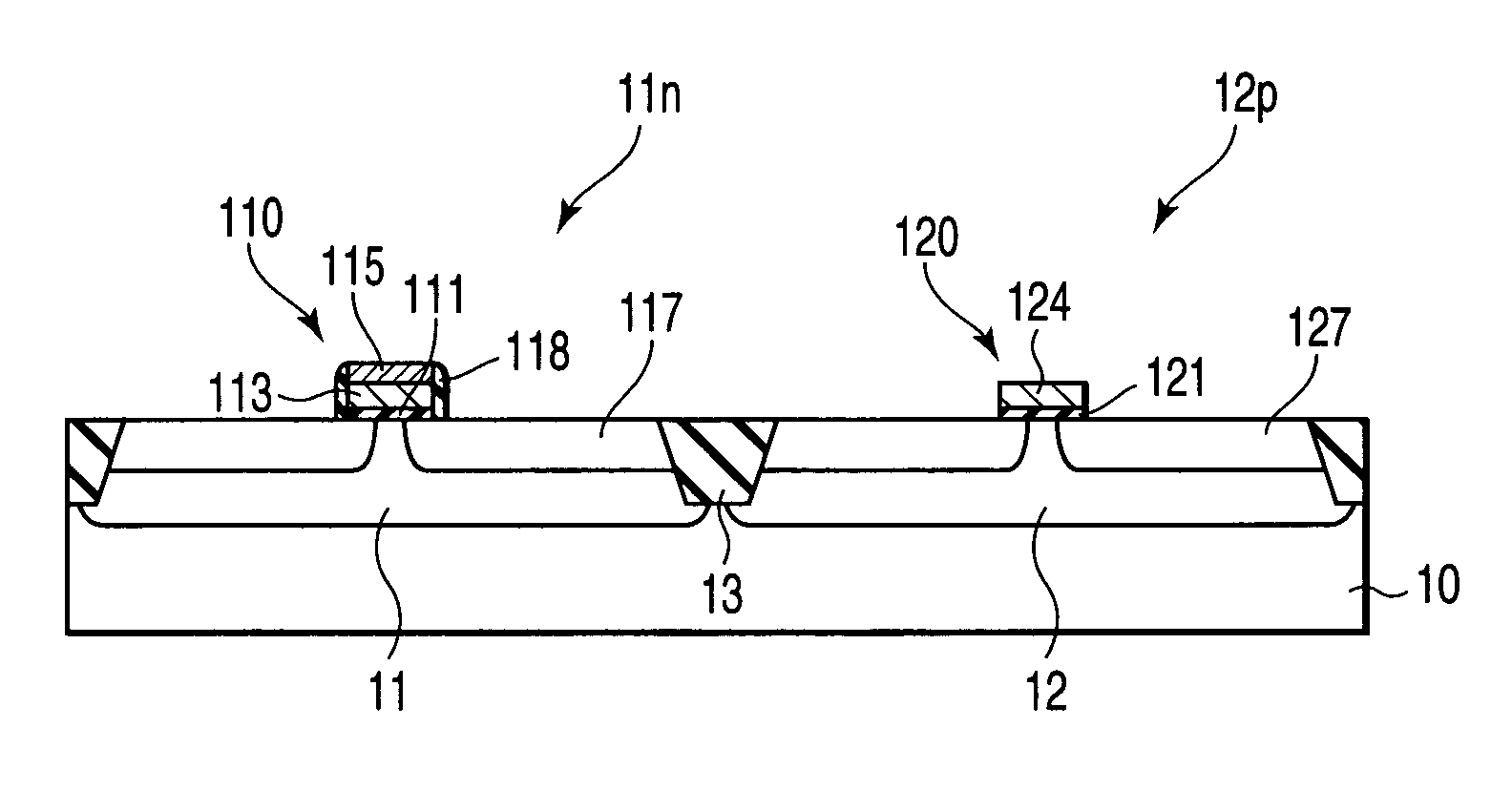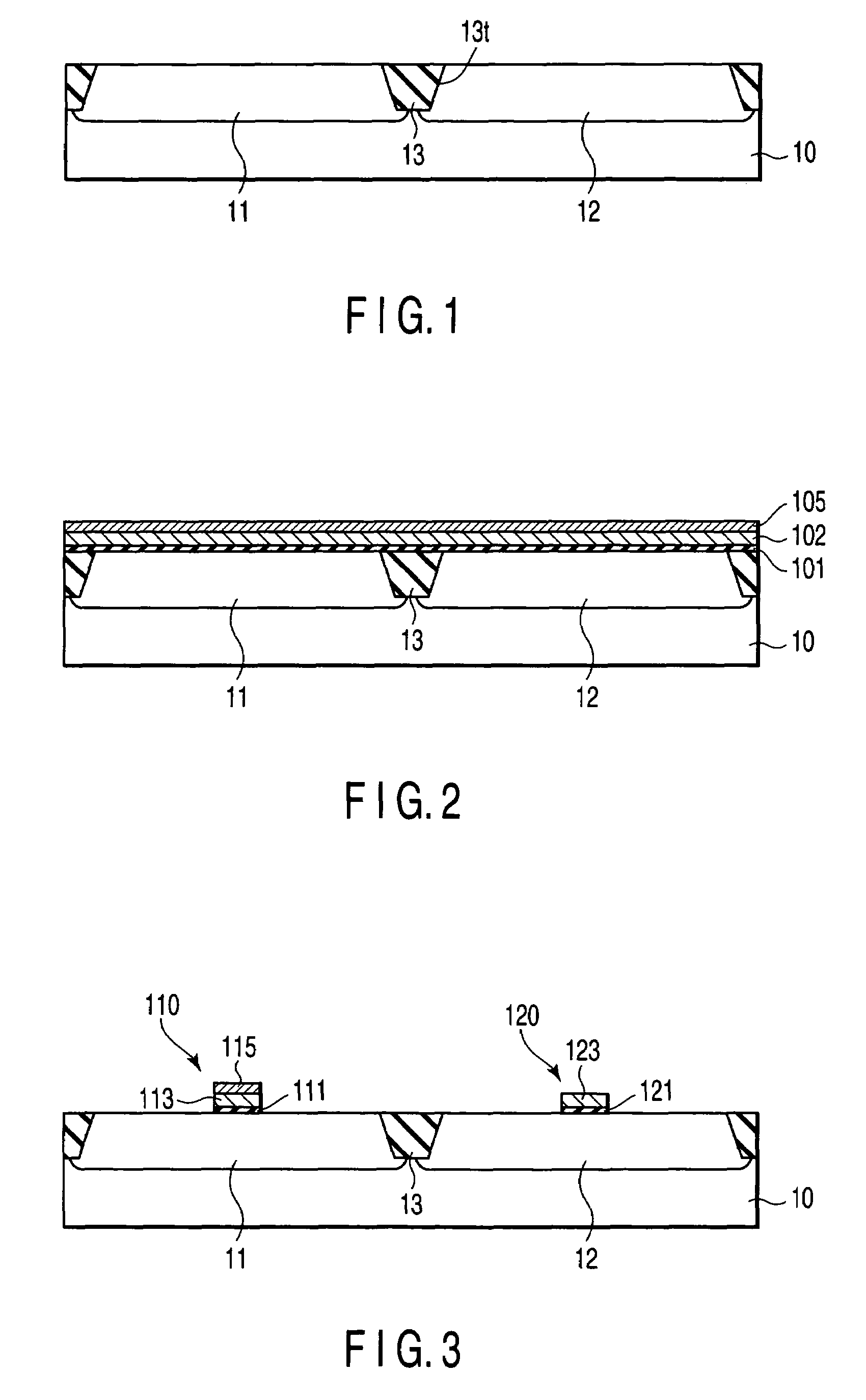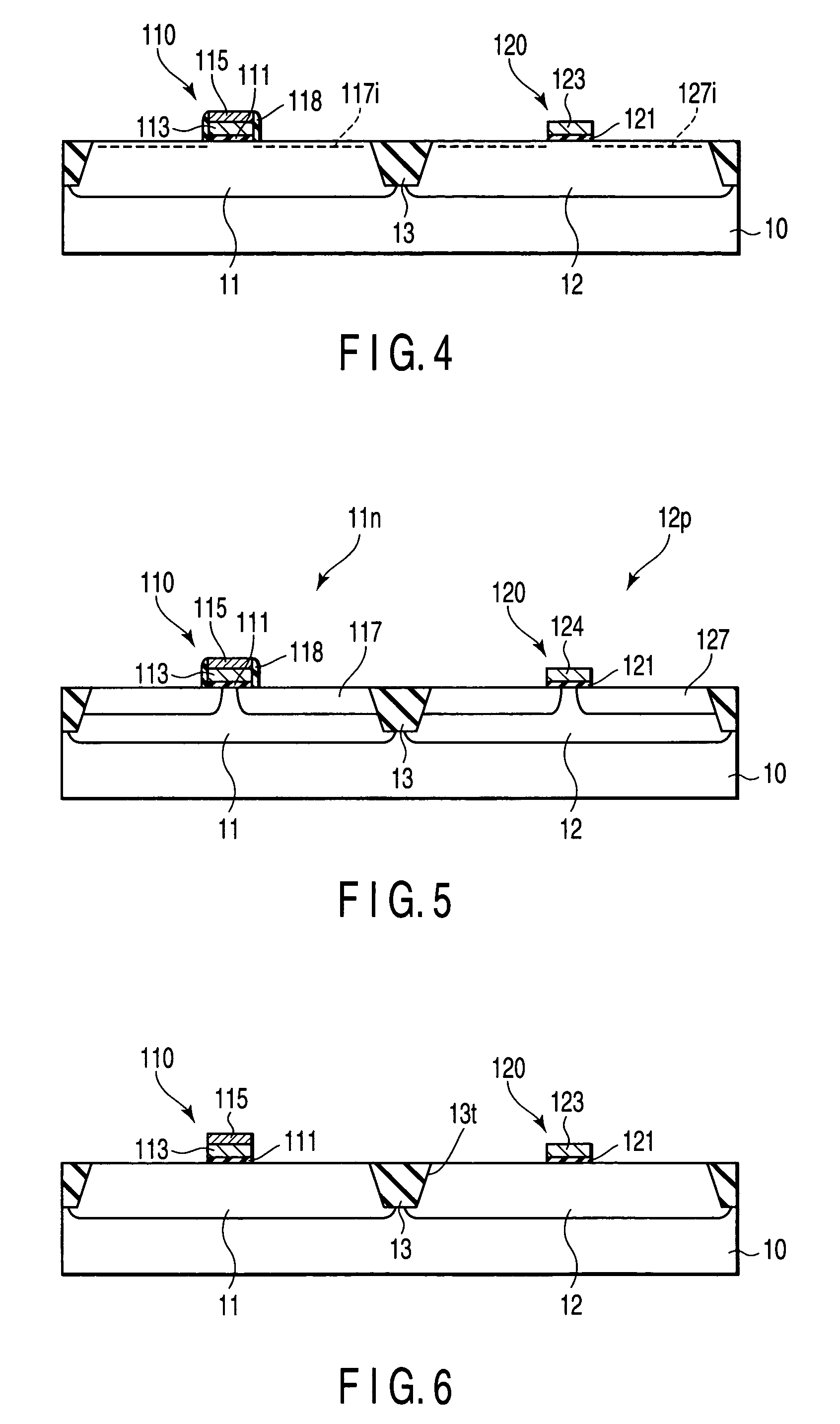Semiconductor device and manufacturing method thereof
a semiconductor and manufacturing method technology, applied in the direction of semiconductor devices, electrical devices, transistors, etc., can solve the problems of inconvenient mass production, affecting the enhancement of performance by reducing the thickness affecting the performance of the gate insulator,
- Summary
- Abstract
- Description
- Claims
- Application Information
AI Technical Summary
Benefits of technology
Problems solved by technology
Method used
Image
Examples
first embodiment
[0042]A first embodiment relates to a manufacturing method for a CMOS semiconductor device with a basic structure, that is a method for doping nitrogen into an entire Mo film used to gate electrodes before patterning the gate electrodes and then out-diffusing nitrogen from the gate electrodes of only one type to reduce the nitrogen concentration.
[0043]FIGS. 1 to 5 are cross sectional views showing a manufacturing method for a MOS semiconductor device according to the first embodiment of the invention.
[0044]First, as shown in FIG. 1, a first conductivity type, for example, p-type, semiconductor device region 11 and a second conductivity type, for example, n-type, semiconductor device region 12, and an isolation 13 for isolating adjacent semiconductor devices from each other are formed in a silicon substrate 10. As the silicon substrate 10, a p-type substrate is used in many cases, but an n-type substrate can also be used. In this case, the manufacturing process is basically the same ...
second embodiment
[0061]A second embodiment relates to a manufacturing method for a CMOS semiconductor device having regions with shallower junction depth formed near gate edges (hereinafter referred to as extensions) to relax the short channel effect of a MOS semiconductor device. Similar to the first embodiment, nitrogen is doped into an entire Mo film before gate electrode patterning and then nitrogen is out-diffused from the gate electrodes of only one of the MOS devices.
[0062]FIGS. 6 to 8 are cross sectional views showing the steps of a manufacturing method for a MOS semiconductor device according to the second embodiment of the invention. In this embodiment, the process up to the step of forming the gate electrode structures 110, 120 is the same as that of the first embodiment. Therefore, the process up to the gate electrode formation is briefly explained below, but the detail explanation is omitted.
[0063]FIG. 6 is the same as FIG. 3. First and second semiconductor device regions 11, 12 and an ...
third embodiment
[0073]Like the first embodiment, a third embodiment relates to a manufacturing method for a CMOS semiconductor device in which no extensions are formed. However, in the third embodiment, nitrogen is doped into both gate electrodes after gate electrode structures are formed and then nitrogen is out-diffused from the gate electrodes of only one of the CMOS devices.
[0074]FIGS. 9 to 12 are cross sectional views showing the steps of a manufacturing method for a MOS semiconductor device according to the third embodiment of the invention. As shown in FIG. 9, first and second semiconductor device regions 11, 12 and an isolation 13 to isolate the adjacent semiconductor devices from each other are formed on a silicon substrate 10. Further, a gate insulator 101 and a Mo film 102 for forming gate electrodes are formed on an entire surface of the resultant structure. In this embodiment, the process up to the step of forming the Mo film 102 is the same as that of the first embodiment, and therefo...
PUM
| Property | Measurement | Unit |
|---|---|---|
| thickness | aaaaa | aaaaa |
| feature size | aaaaa | aaaaa |
| thickness | aaaaa | aaaaa |
Abstract
Description
Claims
Application Information
 Login to View More
Login to View More - R&D
- Intellectual Property
- Life Sciences
- Materials
- Tech Scout
- Unparalleled Data Quality
- Higher Quality Content
- 60% Fewer Hallucinations
Browse by: Latest US Patents, China's latest patents, Technical Efficacy Thesaurus, Application Domain, Technology Topic, Popular Technical Reports.
© 2025 PatSnap. All rights reserved.Legal|Privacy policy|Modern Slavery Act Transparency Statement|Sitemap|About US| Contact US: help@patsnap.com



